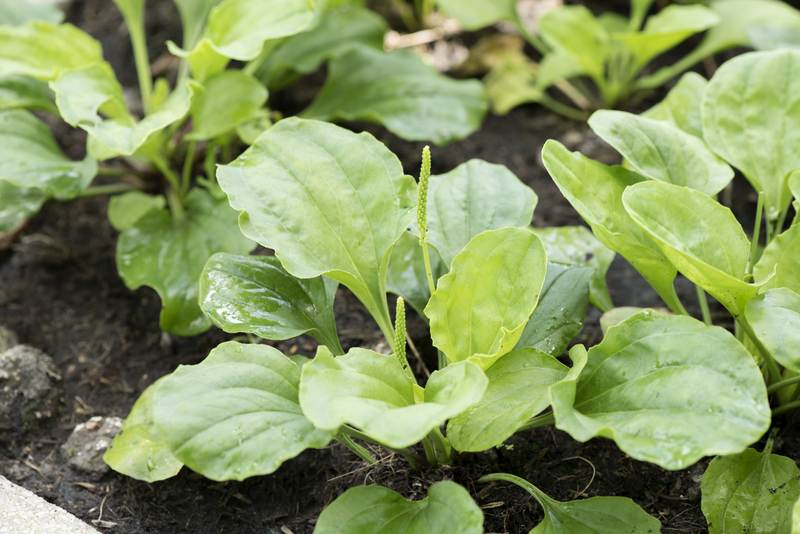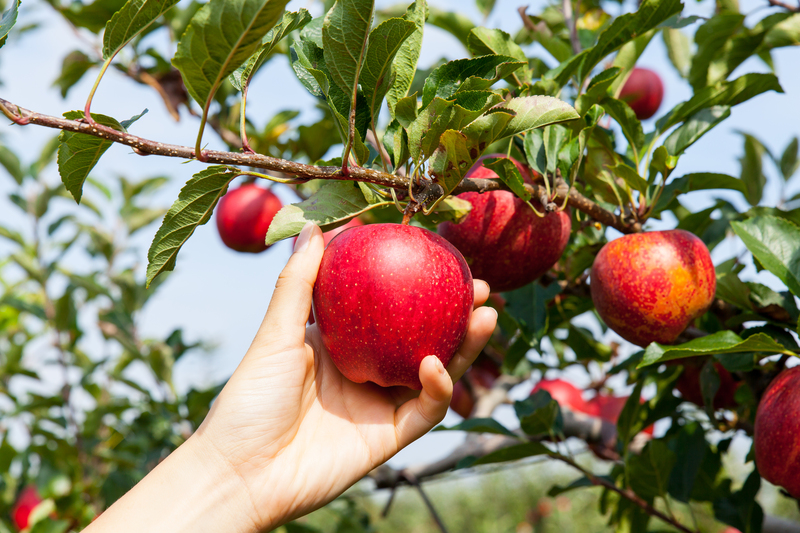A Fresh Slate: Starting Over with Garden Restoration
Posted on 22/08/2025
A Fresh Slate: Starting Over with Garden Restoration
Is your garden looking tired, overgrown, or simply not sparking joy anymore? Garden restoration is a rewarding endeavor that gives outdoor spaces a new lease on life. Whether you've inherited a neglected backyard, your original landscaping has become unruly, or you crave a new style, starting over with garden restoration offers endless opportunities to refresh and transform your environment. This comprehensive guide will help you reimagine your garden from the ground up, step by exciting step.

Why Choose Garden Restoration?
We often develop a special connection to our outdoor spaces. However, time, weather, and neglect can leave gardens needing a fresh start. A fresh slate with garden restoration brings a host of benefits:
- Improved curb appeal: A revitalized garden enhances your home's aesthetic and value.
- Healthier ecosystems: Proper restoration promotes biodiversity and attracts pollinators.
- Personal satisfaction: Creating your own outdoor oasis is deeply rewarding and therapeutic.
- More functionality: Maximize space for entertaining, relaxing, or growing your own produce.
Embracing a new garden restoration project is much more than landscaping--it's about renewal, sustainability, and self-expression.
Assessing Your Current Garden: The Starting Point
The key to successful garden renovation lies in thorough assessment. Take a critical look at the space and ask yourself:
- What are the existing issues? Dead or overgrown plants, poor drainage, or outdated features?
- Which plants are worth saving? Are there valued mature trees, shrubs, or perennials?
- How do you use the garden? Do you need play areas, dining zones, or peaceful retreats?
- What style appeals to you? Modern, cottage, wildlife-friendly, or edible landscapes?
- What is your budget and timeline?
Make notes, take photos, and even draw a basic map. This evaluation will guide your dream garden restoration journey.
Planning Your Garden Restoration Project
1. Setting Clear Goals and Priorities
Restoring a garden from scratch requires vision and clarity. Define your main objectives:
- Do you want low-maintenance design or abundant floral displays?
- Will you focus on sustainability, wildlife habitat, or edible gardening?
- Are there problem areas (shady corners, drainage issues, invasives) to address?
Establishing priorities ensures you stay focused and achieve a lasting transformation.
2. Gathering Inspiration and Ideas
Immerse yourself in garden magazines, Pinterest boards, and local botanic gardens. Notice:
- Color schemes and seasonal interest
- Hardscaping elements like paths, patios, and raised beds
- Plant combinations and structural layers
- Wildlife features such as bird baths, bee hotels, and ponds
Collate photos and sketches to build your personal garden restoration mood board.
3. Drafting a Garden Design Plan
Professional designers can help, but many garden restorations start with a homeowner's own creativity. On graph paper or using free design apps, sketch:
- Zones: Grass, beds, patios, vegetable plots
- Focal points: Statement trees, sculptures, water features
- Walkways: How you will move through the space
- Sun/Shade mapping: Understand where plants will thrive
Meticulous planning at this stage makes later garden restoration work far more satisfying and effective.
First Steps: Clearing and Preparing Your Space
Starting your garden renewal in earnest means giving everything a thorough reset.
1. Declutter and Remove Debris
Get rid of what you no longer want or need:
- Pull out dead or invasive plants
- Remove broken garden features
- Compost leaves and soft waste, responsibly dispose of the rest
2. Clear Overgrown Areas
- Cut back excessive growth (prune carefully if you want to save mature shrubs)
- Use a weedkiller for persistent weeds (choose eco-friendly options)
- Tame and aerate compacted lawn areas
Don't be afraid to be bold--most gardens benefit from decisive initial clearing!
3. Soil Testing and Improvement
Healthy soil is the backbone of garden restoration.
- Collect soil samples and test for pH and nutrient content
- Amend as needed with compost, organic matter, lime, or fertilizer
- For heavy clay or sandy soils, add bulky organic materials
Invest in your soil now for greater gardening success in the years to come.
Designing Your Restored Garden: Best Practices
1. Choosing the Right Plants
Select varieties suited to your climate, soil, and lifestyle. Consider:
- Native plants: They thrive with minimal effort and support local wildlife
- Pollinator-friendly flowers: Attract bees, butterflies, and birds
- Evergreens and structure: Provide year-round interest
- Drought-tolerant or low-maintenance options for easier care
Mix textures, heights, and colors for a layered, dynamic look in your renewed space.
2. Incorporating Hardscape Features
Refreshing the bones of your garden is just as important as the planting. Ideas include:
- Patios built with reclaimed brick, stone, or permeable pavers
- Curving gravel paths for movement and visual interest
- Raised vegetable beds, trellises, or pergolas
- Rain gardens or swales to manage water naturally
Carefully planned hardscaping helps define zones and makes your restored garden welcoming and practical.
3. Restoring or Introducing Water Features
- Old ponds can be cleared, relined, and replanted with native aquatics.
- Add a simple bird bath or bubbling fountain for wildlife and serenity.
- Ensure all water features are safe, well-maintained, and fit your garden style.
Water adds a soothing ambiance and attracts beneficial creatures to your revitalized garden.
4. Lighting and Finishing Touches
Outdoor lighting can transform your space after dark:
- Solar-powered path markers
- Up-lit trees and focal points
- Fairy lights for seating areas
Add finishing touches such as furniture, pots, art, or a vegetable patch to express your personality in your restored garden retreat.
Eco-Friendly Garden Restoration: Sustainable Choices
Garden restoration is the perfect time to make environmentally conscious decisions. Opt for:
- Waterwise planting: Use mulch, drought-tolerant species, and rain barrels
- Peat-free composts and organic fertilizers
- Reuse and recycle old bricks, stones, or wood in your design
- Native hedgerows and wildflower meadows for local ecology
- Limit lawn area or replace with clover, thyme, or ornamental grasses
Each sustainable choice ensures your restoration is more resilient and beneficial for the planet.
Aftercare and Maintenance for a Lasting Transformation
Restoring a garden doesn't end once planting is complete. Your renewed garden will need:
- Regular watering, especially during establishment
- Annual mulching to protect soil and conserve moisture
- Seasonal pruning and deadheading
- Fertilizing according to plant needs
- Constant monitoring for pests and diseases
A well-maintained garden only becomes more beautiful--and easier to care for--with each passing season.
Common Challenges in Garden Restoration (and How to Overcome Them)
- Heavy weed infestations: Use mulch, weed barriers, and regular hand weeding.
- Persistent pests: Encourage natural predators and use organic controls.
- Poor soil or drainage: Improve with organic matter and, if needed, install drains or raised beds.
- Shade and sun mismatches: Match plant selection to actual conditions, adjust as you learn.
- Limited time or budget: Tackle your restoration in phases and reuse existing materials.
Every challenge in garden revival is a learning experience that brings you closer to your dream outdoor space.
Success Stories: Inspiring Garden Renewal Transformations
Many homeowners have turned neglected yards into breathtaking environments. Consider these real-world examples for inspiration:
- Urban wildlife oasis: A compact city plot restored with native shrubs, pond, and bug hotel now hums with biodiversity.
- Cottage garden revival: Weedy beds transformed into layered perennials, roses, and winding stone paths.
- Modern minimalist makeover: Old shrubs replaced with geometric grasses and sculptural boulders for a sleek, serene look.
- Edible garden retreat: Lawn replaced with berry bushes, raised veggie beds, and herbal borders, feeding both people and pollinators.
Garden restoration invites creativity, encourages sustainability, and lets your unique vision bloom.

Final Thoughts: Embrace the Journey of Garden Restoration
Starting over with garden restoration isn't just a project--it's an adventure in renewal and growth. While the initial work may seem daunting, the rewards of crafting a vibrant, healthy, and personalized outdoor space are immense. Whether you choose DIY approaches or enlist professional help, remember that each season will bring new surprises and accomplishments.
So go ahead--give your garden a fresh slate. Tackle one section at a time, savor each small victory, and enjoy the continual transformation that only a garden can offer. As your outdoor space flourishes, you'll rediscover the joy, beauty, and peace that only nature can provide.
Frequently Asked Questions About Garden Restoration
- How long does garden restoration take? - This depends on garden size and scope. Most projects unfold over several weeks or months, but you'll see improvements with each stage.
- Do I need professional help? - Simple designs can be managed DIY, while complex layouts or issues (drainage, retaining walls) may benefit from expert guidance.
- Can I restore a garden in any season? - The best time is typically early spring or fall for planting, but clearing, planning, and hardscaping can be done year-round.
- How do I keep my restored garden looking good? - Establishing a seasonal care schedule, mulching, prompt weeding, and attentive watering are key to long-term health.
Ready for Your Own Fresh Start?
A fresh slate in garden restoration awaits you. With imagination, patience, and a commitment to growth, your landscape will become an ongoing source of pride and pleasure. Why wait? Begin your journey today and rediscover the wonders of your outdoor haven!

